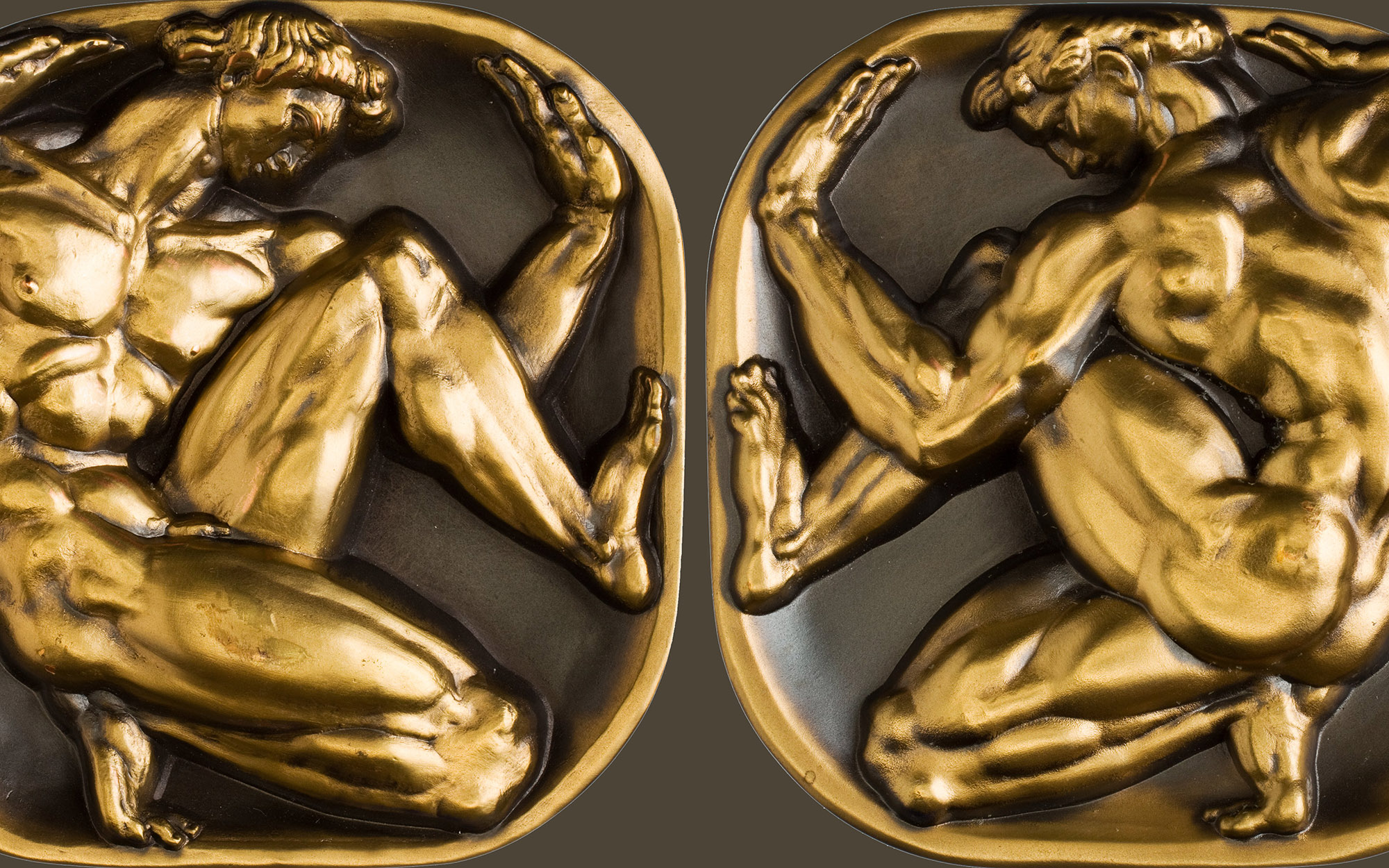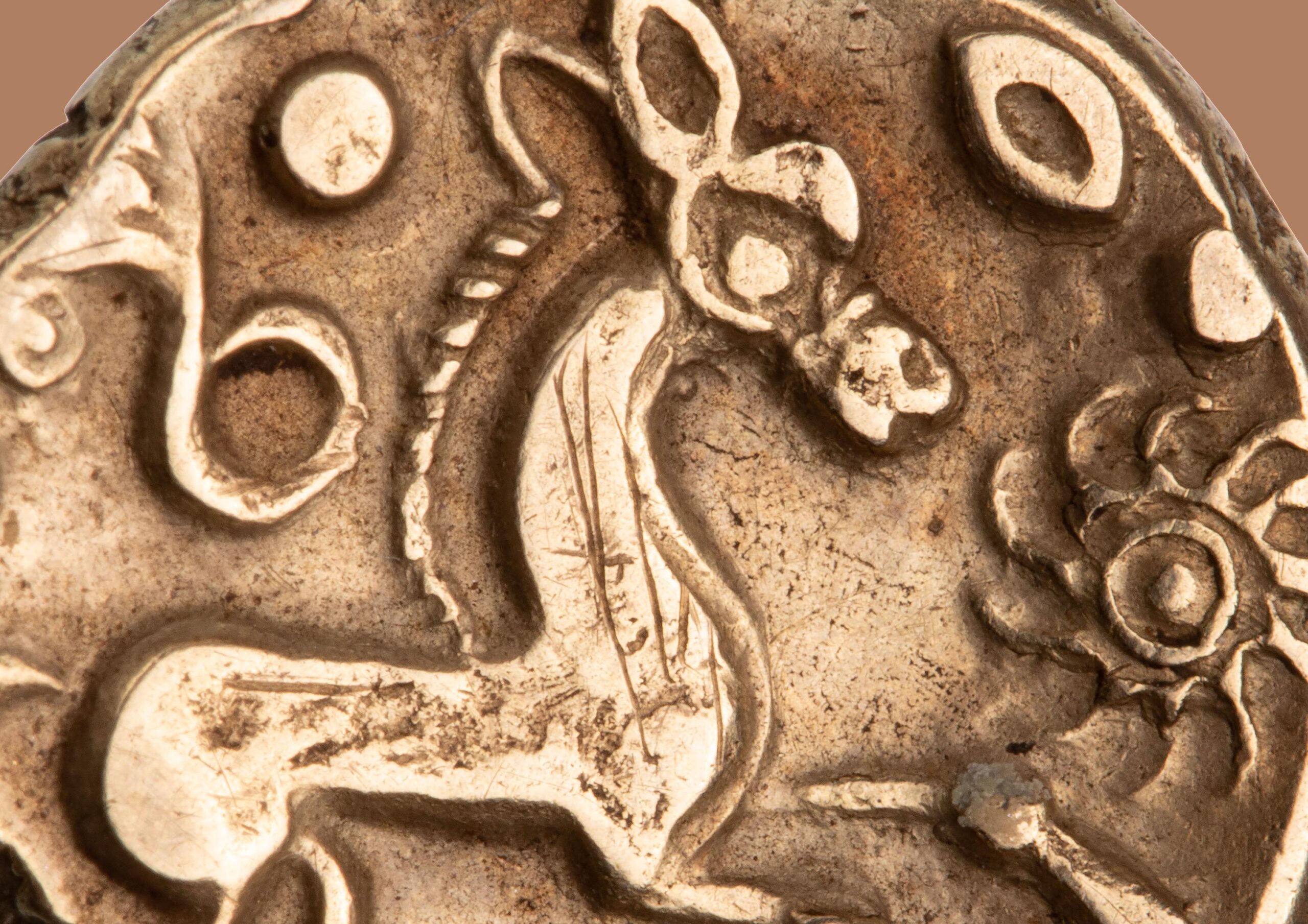Is Sponsian real? Further Considerations
A new study, published by Paul N. Pearson et al. last week in Plos One, has made a sensation in global news by claiming to have authenticated several unusual gold coins in the Hunterian Museum collection in Glasgow which seem to feature an otherwise unknown Roman emperor Sponsianus. The coins, which numismatists have long believed to be early 18th-century forgeries, include two gold coins naming the Roman emperor Philip I or II, another naming Gordian III, and a fourth naming a Sponsianus, who is known only from a few examples of this coin type (Fig. 1).

All of these coins are ostensibly the exceedingly rare double aureus, though the weights are much higher than was typical. These coins are of uncertain origin but seem to have been part of a hoard discovered in 1713 in Transylvania. This hoard was recorded in a note by Carl Gustav Heraeus as including the same three coin types in Glasgow as well as three other types (Fig. 2).

The surviving coins all have very similar stylistic features—most notably in the shapes of the lettering—that suggest the designs were produced by the same engraver. Although it is not certain that the Hunterian coins were part of the 1713 hoard, all known versions of the Sponsian coins have always been associated with coins of the other types from the 1713 group, making it likely that all examples of these unusual coins originated together.
Since the publication of the Plos One study, there have since been several responses to the study. Aleksander Bursche and Kyrylo Myzgin have released a response pointing out several important problems that were not sufficiently addressed by the Plos One study. Alfred Deahl responded in a post from Antigone Journal, reasserting the belief that the coins are forgeries and Csaba Szabó has discussed methodological problems with the study. Björn Schöpe writing for CoinsWeekly cites additional critiques of the Plos One study. Scholars such as Johannes Wienand and Marjanko Pilekić have also taken to Twitter to discuss what it even means to say these are “authentic” Roman coins.
This response presents some of the most unusual features of the Sponsian group and raises a few considerations that have not yet been addressed. There are several unusual features of these coins:
1. They were cast in molds rather than being hammer struck. Although some Roman Republican bronzes from the third century BCE were cast, Roman coinage was otherwise produced by being struck between two dies. The Hunterian coins stylistically resemble ancient imitations of Roman coins, typically called “barbarous radiates,” more than they do official Roman coinage. Although there are examples of cast barbarous imitations, these were typically made in base metal and no examples survive in gold. Casting is a normal technique for modern forgeries.
2. They feature a mixture of Roman republican and imperial motifs. The 1713 hoard included a gold coin type whose obverse and reverse designs are based on a Republican denarius of L. Plautius Plancus from 47 BCE (RRC 453/1) and the reverse design of the Sponsian coin, is modeled on that of RRC 242/1, a denarius of C. Minucius Augurinus from 135 BCE (Fig. 3).

The obverse of the Philip coins similarly uses a bust of Roma, which was the standard obverse design on Republican denarii until the end of the second century BCE. Imperial coinage with Republican motifs do exist. Trajan, for example, produced a series of “restored” issues reproducing Republican coin types (RIC II Trajan 765–814). But these “restored” coins differ notably from the 1713 coins: they reproduce the original issue with the addition of a legend naming the emperor and the abbreviation REST for restituit (“restored”). They do not pair imperial portraits with Republican reverses (as on the Sponsian coins) or reproduce Republican design without indicating the issuing authority (as on the Plautius coins). We also must question how the makers of the Sponsian coins had two Republican denarii, dating at least 300 years earlier, available to them as prototypes (neither was ever a “restored” issue). Pearson et al. look to Tacitus here, who says that some Germanic tribes favored Republican silver coinage—specifically serrated issues and those featuring two-horse chariots (serratos bigatosque, Tac., Germ. 5.5). Pearson et al. conclude this preference must have been due the superior quality of the metal and so make the unfounded claim that the Sponsian group used Republican models to imbue faith in the quality of the metal. Of course, Tacitus is writing about one and a half centuries earlier than the presumed manufacture of the Sponsian coinage. The Germanic tribes’ preference for bigatos coins (those featuring a biga) was also probably due to similarity with Celtic coinage, which must have been commonly used in the same areas.
3. The legends have numerous mistakes. Several critics have pointed out the unusual use of the genitive SPONSIANI in the obverse legend, as well as the legend’s placement only to the right of the imperial head. The genitive would indeed be unusual, though this particular case might be an illusion. Several of the coins from the 1713 assemblage have double impressions. Since these coins were cast and not struck, these double impressions are probably caused from the mold slipping while taking the impression. The reverse of the Glasgow Sponsian coin clearly shows such a double impression (Fig. 1), but the obverse seems to as well. Based on some other traces of possible double imprint, the final “I” may actually be a lingering imprint of the second vertical bar of the N (Fig. 4).

More minor signs of slippage are visible at the start of the legend and on the radiate crown (Fig. 5).

Even if this is the case, however, the legends of the Philip and Gordian types are riddled with mistakes. For both types the reverse legends are gibberish, though at least for the Gordian type the nonsense MLETHRM PROPVGNATOREN DII can be identified as a bungling of MARTEM PROPVGNATOREM, which appears on a few official issues of Gordian III. The obverse legends also include mistakes: the Philip type has PHILIPHVS for PHILIPPVS and EIVS for PIVS (Fig. 6), while the Gordian type has BELT for FEL (Fig. 2). Even more unusual is the duplication of the G in AVGG on the Philip coins (Fig. 6).

The abbreviation AVGG stands in place of a plural (Augusti or Augustorum) and so should never be used in the titular of a single emperor. Clearly whoever produced these coins was not well-versed in the legends of Roman imperial coinage.
4. All of the known coins of each type were clearly produced from the same singular design. Pearson et al. suggest the Sponsian coins were created by making a negative design in metal then using this to creating a positive relief “hub,” possibly from clay, that could then be used to create molds for casting. For struck coins, typically many versions of the same design are produced in the form of dies which eventually wear out through use. For cast coinage, it is possible that only one master design is required since it can be replicated through the creation of molds with little to no damage of the original template. This, however, suggests a rather slow process and one not likely to have been used to create large issues of coins, as is suggested in the scenario presented by the authors. They hypothesize that Dacia was unable to receive new imperial coinage and the Sponsian coins were minted to pay the armies and prevent economic collapse. If true, we might expect multiple versions of each design to be produced in order to facilitate faster production of larger issues. One might suggest multiple “hubs” were made from the initial master design, but the slippage that appears on the reverse of all examples of the Philip coins shows this could not have been the case.
5. Circulation. There are also questions raised by the presence of these coins in a single hoard that have not been addressed in the study. Pearson et al. argue, based on wear patterns observed using electron microscopes, that the Hunterian aurei circulated for some time before their final deposition. The authors do not guess at how long the coins may have circulated, but they compare the level of wear to a group of 19th-century gold francs that were studied by Manas and Velde, that circulated for up to 100 years. They even note that the Glasgow coins actually show more chipping on the lettering, perhaps because the metal is more brittle than that of the 19th-century coins. But, the Sponsian assemblage could not have circulated for anything close to a century. Even according to the timeline posited by the authors, the coins could have been in circulation only 10–15 years at most. As other critics have pointed out, there is little reliable data on wear patterns and length of circulation. More data would be required to show that the wear patterns of the Hunterian coins really prove circulation, and they should be analyzed beside known 18th-century forgeries as well as authentic Roman coins. We should also consider how a group of coins, which outwardly claim to be the productions of three different emperors, but which were clearly produced by the same manufacturers, ended up in a single hoard after general circulation? Their presence in one hoard is suspicious, especially since none of these types have been found elsewhere. Did these particular coins circulate as a group until deposition? Did someone collect them for their unusual stylistic features? The claims that the Plos One study makes about circulation need to be accompanied by a critical look at the hoard itself.
Clearly, there are still many unaddressed issues surrounding the origin of the 1713 coins. Even the evidence of wear and of surface deposits cannot be shown conclusively not to have occurred in the modern period. As Bursche and Myzgin point out, the coins should have been tested against third-century coins with secure find spots as well as known 18th-century forgeries rather than against third-century coins of uncertain provenience. Pearson et al. put far too much weight on these coins to write an imagined history of Dacia in the later third century with too little critical analysis of the problems with the coins’ manufacture and discovery. Unless further study can provide more certain answers, it seems that these coins should continue to be regarded as modern forgeries.




